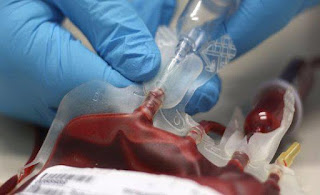Beyond the Drill: Modern Approaches to Dental Caries Treatment
Introduction:
Dental caries, commonly known as cavities or tooth decay, have plagued humanity for centuries. Traditionally, the treatment for dental caries involved the use of the dental drill to remove decayed tooth structure and the placement of fillings. However, modern dentistry has brought forth innovative approaches that go "Beyond the Drill," offering more conservative and effective treatments for dental caries. In this blog, we will explore some of these modern approaches that are revolutionizing dental caries treatment and providing new hope for patients and dentists alike.
Minimally Invasive Dentistry: Preserving Tooth Structure
Minimally invasive dentistry is a philosophy that emphasizes preserving as much healthy tooth structure as possible during the treatment of dental caries. Instead of automatically resorting to the dental drill, dentists now use advanced diagnostic tools like digital radiography and laser fluorescence to detect caries at their earliest stages. Early detection allows for conservative treatments, such as fluoride therapy and sealants, that halt the progression of caries without the need for drilling.
Silver Diamine Fluoride (SDF): Halting Decay Naturally
Silver diamine fluoride (SDF) is a non-invasive liquid applied to cavities to arrest their progress. This innovative treatment works by stopping the growth of harmful bacteria and strengthening the tooth's enamel, effectively halting the decay process. SDF is particularly beneficial for young children, elderly patients, and individuals with dental anxiety who may not tolerate traditional drilling and filling procedures well.
Dental Lasers: A Precise and Painless Alternative
Dental lasers have revolutionized dental care, and they are now being used in the treatment of dental caries. Laser technology allows dentists to precisely remove decayed tissue while preserving healthy tooth structure, reducing the need for anesthesia and minimizing discomfort for patients. Laser treatment is often quicker and more comfortable than traditional drilling, making it an appealing option for those seeking a more pleasant dental experience.
Regenerative Treatments: Reversing Early Decay
In some cases, dental caries can affect the tooth's inner layer called dentin, leading to tooth sensitivity and discomfort. Regenerative treatments, such as remineralization therapy, use special agents and materials to encourage the remineralization of weakened dentin. This approach can reverse early-stage decay and restore the tooth's natural strength, avoiding the need for invasive procedures like fillings or crowns.
Pulpotomy: Preserving the Vital Core
In cases where dental caries have reached the inner pulp of the tooth, especially in children with primary teeth, a pulpotomy may be performed. This procedure involves removing the infected portion of the pulp while preserving the healthy part, thereby maintaining the vitality of the tooth. Pulpotomies can prevent the need for tooth extractions and maintain the integrity of the primary teeth until they naturally fall out.
Conclusion:
Modern dentistry has evolved significantly from the traditional approach of drilling and filling for dental caries treatment. Embracing minimally invasive dentistry, silver diamine fluoride, dental lasers, regenerative treatments, and pulpotomy, dental professionals now offer more conservative, painless, and effective solutions for managing tooth decay. Beyond the drill, these modern approaches are transforming dental caries treatment, focusing on preserving tooth structure and improving patient experiences. As research and technology continue to advance, the future of dental caries treatment promises even more groundbreaking and patient-friendly solutions, paving the way for healthier smiles and improved oral health for people of all ages.




Comments
Post a Comment